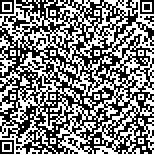本文已被:浏览 381次 下载 2662次
投稿时间:2021-12-09 修订日期:2022-05-17
投稿时间:2021-12-09 修订日期:2022-05-17
中文摘要: 基于融化层识别算法(melting layer detection algorithm,MLDA)原理,利用2020年7—8月济南、青岛两部S波段双偏振多普勒雷达体扫数据,进行融化层高度信息识别试验,根据试验结果在MLDA算法中引入径向连续性检验、增加扫描仰角范围与调整判别融化层出现的距离库总数阈值的改进措施,与改进前的MLDA算法进行了对比分析,得到以下结论:MLDA对融化层顶高度有一定识别效果,识别的融化层顶高度的平均绝对误差较大,融化层底高度过低;加入径向连续性检验(简称MLDA-R1)后,识别的融化层顶高度的平均绝对误差明显减小,融化层底对应温度与融化层厚度分布在合理区间,但是遗漏识别的试验数明显增加;在MLDA-R1基础上,扫描区域增加了3.3°仰角(简称MLDA-R2)并调整了判别融化层出现的距离库总数阈值(简称MLDA-R3),融化层遗漏识别的试验数明显减少,同时提高了对融化层高度信息的识别效果;一些降水回波与非降水回波混合的区域会被错误识别为融化层区域,影响MLDA算法对融化层的识别效果,仍需进一步改进。总体来看,改进后的MLDA更适用于我国S波段双偏多普勒振雷达,对雷达水凝物相态分类与定量降水估测等气象现代化业务有一定支撑作用。
中文关键词: 双偏振多普勒雷达,融化层,MLDA,径向连续性检验
Abstract:Based on the principle of the melting layer detection algorithm (MLDA) from National Severe Storms Laboratory, some detection tests are carried out using S-band dual-polarization radar volume data from Jinan and Qingdao radar stations in July and August 2020. According to the test results, some improvement measures such as radial continuity check, increasing the range of scan elevation and adjusting the threshold of total radar bin number for identifying the melting layer are integrated into the MLDA, and the recognition effect of MLDA on the melting layer before and after improvement are compared and the conclusions are as follows. The melting layer could be identified by the MLDA, but the mean absolute error of the top height of the melting layer is large and the melting layer bottom height is too low. After the radial continuity check is integrated into the MLDA (MLDA-R1), the mean absolute error of the top height of the melting layer gets smaller obviously, the temperature of the bottom height and the thickness of the melting layer are within a reasonable range, but the number of the test not having detected the melting layer increases markedly. On the basis of the MLDA-R1, 3.3° elevation is added to the scanning area (MLDA-R2) and the threshold of total number of radar bin for recognizing the melting layer is adjusted (MLDA-R3). Then, the number of the test not having detected the melting layer is significantly reduced, and the identification effect of the height information of the melting layer is improved. Some areas containing precipitation echo and non-precipitation echo could be falsely detected as the melting layer by MLDA after improvement so that the recognition effect of the melting layer is influenced. In general, MLDA after the improvement is more applicable to S-band dual-polarization radar in China and it can be utilized to support the radar hydrometer classification and quantitative precipitation estimation.
文章编号: 中图分类号: 文献标志码:
基金项目:山东省自然科学基金项目(ZR2022MD072、ZR2021QD028、ZR2020MD052、ZR2020MD053)、中国气象局创新发展专项(CXFZ2022J034)、山东省气象局重点科研项目(2021sdqxz05,2021sdqxz09)共同资助
| 作者 | 单位 |
| 夏凡 | 山东省气象防灾减灾重点实验室,济南 250031 山东省气象科学研究所,济南 250031 |
| 吴炜 | 山东省气象防灾减灾重点实验室,济南 250031 山东省气象科学研究所,济南 250031 |
| 张乐坚 | 中国气象局气象探测中心,北京 100081 |
| 文浩 | 中国气象局气象探测中心,北京 100081 |
引用文本:
夏凡,吴炜,张乐坚,文浩,2023.基于S波段双偏振雷达融化层识别算法的研究[J].气象,49(2):146-156.
XIA Fan,WU Wei,ZHANG Lejian,WEN Hao,2023.Study of Designation Algorithm of the Melting Layer Based on S-Band Dual-Polarization Radar[J].Meteor Mon,49(2):146-156.
夏凡,吴炜,张乐坚,文浩,2023.基于S波段双偏振雷达融化层识别算法的研究[J].气象,49(2):146-156.
XIA Fan,WU Wei,ZHANG Lejian,WEN Hao,2023.Study of Designation Algorithm of the Melting Layer Based on S-Band Dual-Polarization Radar[J].Meteor Mon,49(2):146-156.


